I ended up in a yacht race once, thinking I was going along to dribble my toes in the water as I lolled on deck with a book in one hand and a cocktail in the other. Instead, I was used for ballast. The experience traumatised me. I tried sailing again in Greece, and it left me cold, despite the heat. But I had fond memories of a slow-paced barge trip or two down the Grand Canal and the Royal Canal in Ireland.
When friends said they’d rented a barge for a week in the South of France to spend a few days cruising the Canal de Garonne, I invited us along for a night. Just to see if the 8 km/h would be my water speed. And it is!
They flew into Toulouse and took the train to Agen to pick up the boat. We flew later into Bordeaux and just about caught our train to Marmande where we met up with them late on a Friday night. From there we taxied to the boat, moored at Pont des Sables. We spent a day and a half making our way back to Agen where we trained back to Bordeaux for a night before flying home.
The Canal de Garonne, formerly known as Canal latéral à la Garonne, is a French canal dating from the mid-19th century which connects Toulouse to Castets-en-Dorthe. The remainder of the route to Bordeaux uses the river Garonne. It is the continuation of the Canal du Midi which connects the Mediterranean with Toulouse.
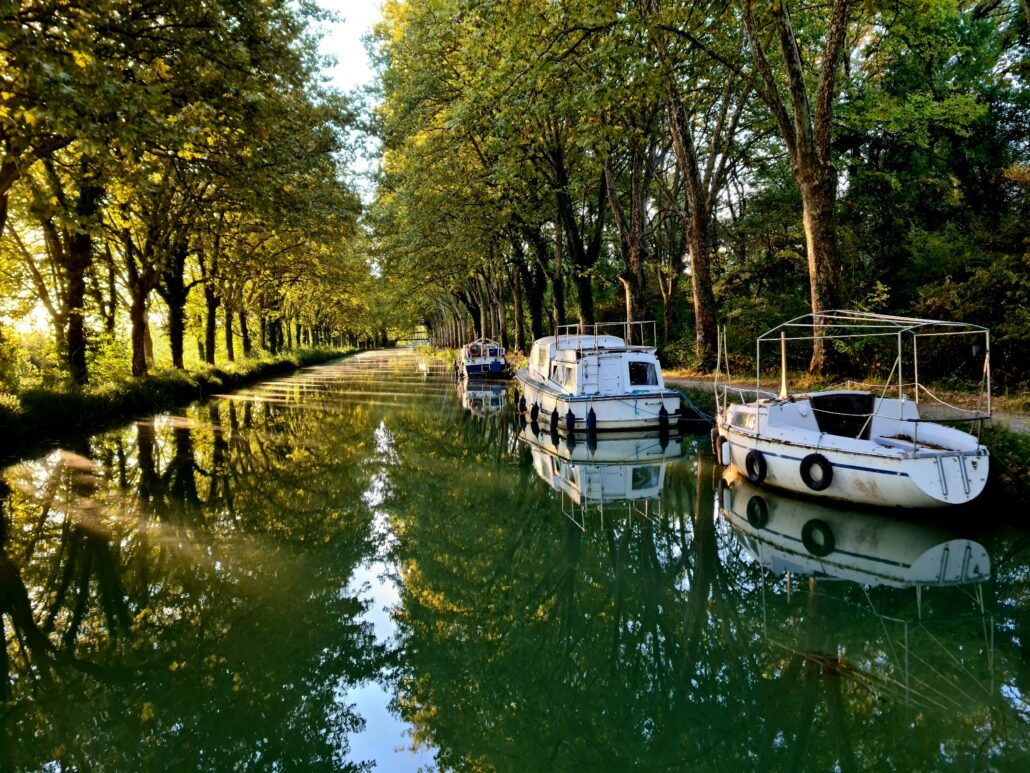
It was late September. Traffic on the canal was light. We could stop when and where we pleased, as and when we pleased. The Canal du Midi might be more famous, but the Garonne is noted for its food and drink. There are plenty of stops boasting decent wines and tasty food. And nothing compares to fresh bread from a boulangerie, not to be confused with a patisserie or a viennoiserie. We were spoiled on that first morning in Pont des Sables and for the next few days would find nothing to beat Le Fournil Gascon.
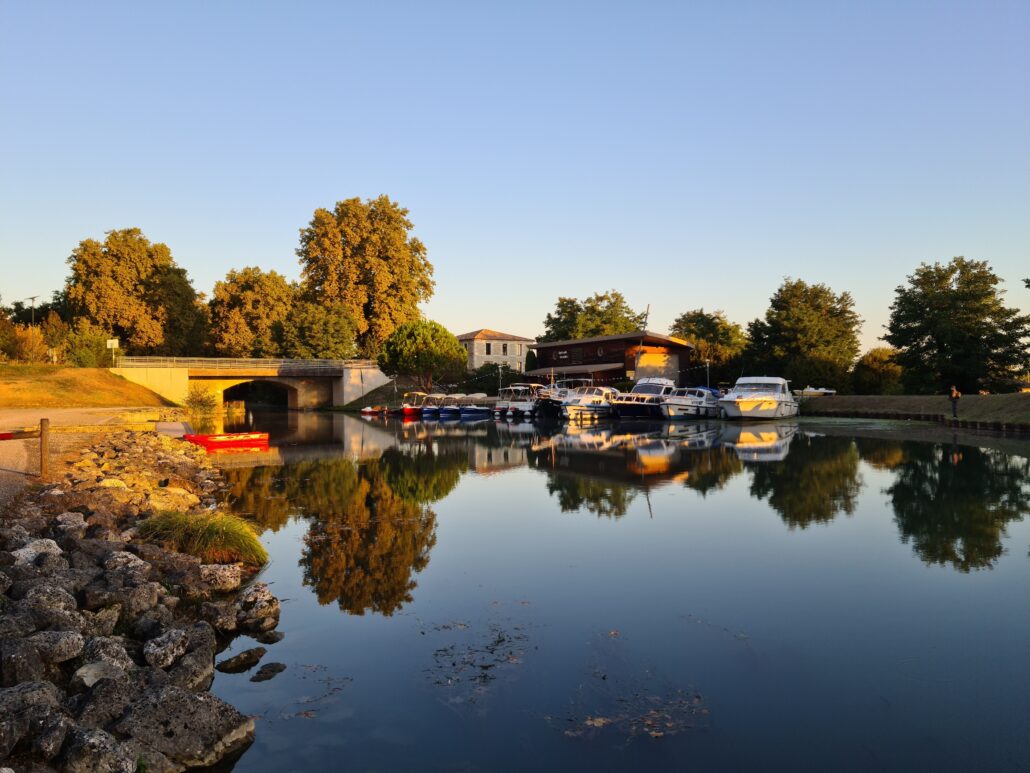
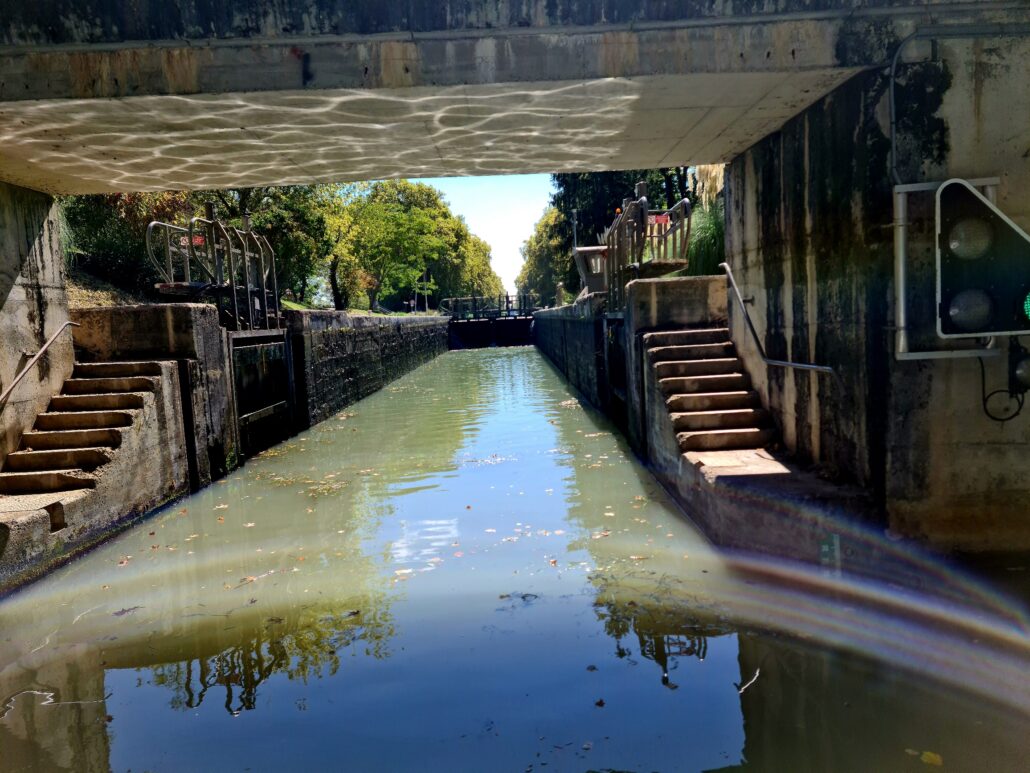

We were in no rush. We couldn’t be. The speed limit on the canal is 8km/h. We measured our progress in locks. Unlike in Ireland back in the day, these had been automated. Passing through involved tugging on a pulley some ways out to signal our approach, waiting for a light to go green, and then sailing into the lock with one person climbing out to push the button once the gates had closed. Then we roped off and held tight as the water level rose or sank, depending on which way we were going. Some were big enough to take two boats. And all managed to attract an audience. It was mesmerising stuff.
We stopped in the village of Le Mas-d’Agenais to see its Rembrandt – Christ on a Cross. Its 1500 residents are rightly proud of their masterpiece, reputedly worth some €90 million. They’ve no intention of selling it any time soon, though.
It all started in 1804 when a captain of the Napoleonic armies, a native of the village, Xavier Duffour, acquired the painting, without an apparent signature, at an auction in Dunkirk, before donating it to the parish the following year. A century later, the work became the property of the municipality when the Church and the State separated. It was classified as a historic monument in 1918 but was not authenticated until 1959 when a restoration at the Louvre unearthed the illustrious signature: RHL, for Rembrandt Harmenszoon of Leiden.
I’ll admit to being equally impressed with the rose window and the stone carvings.
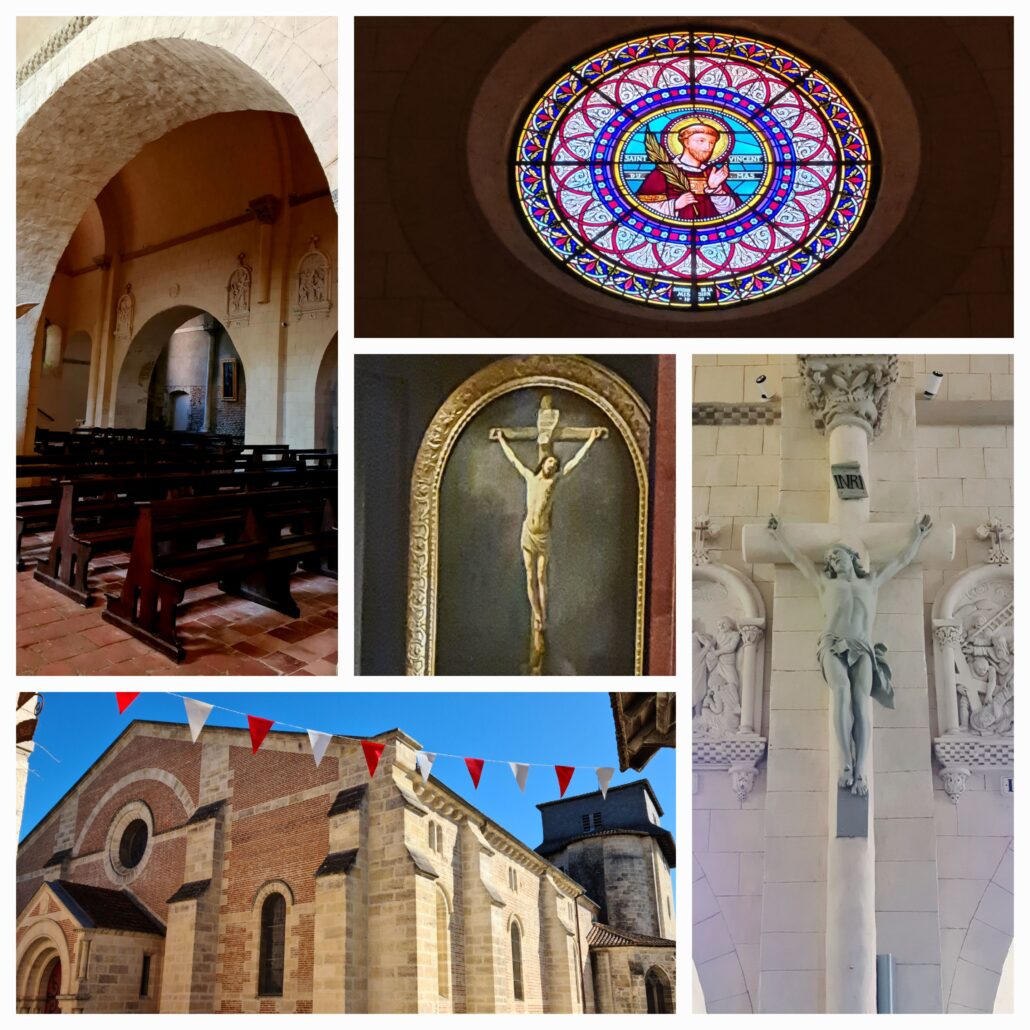
As we moseyed along, the light on the water was doing its best to keep us entertained.
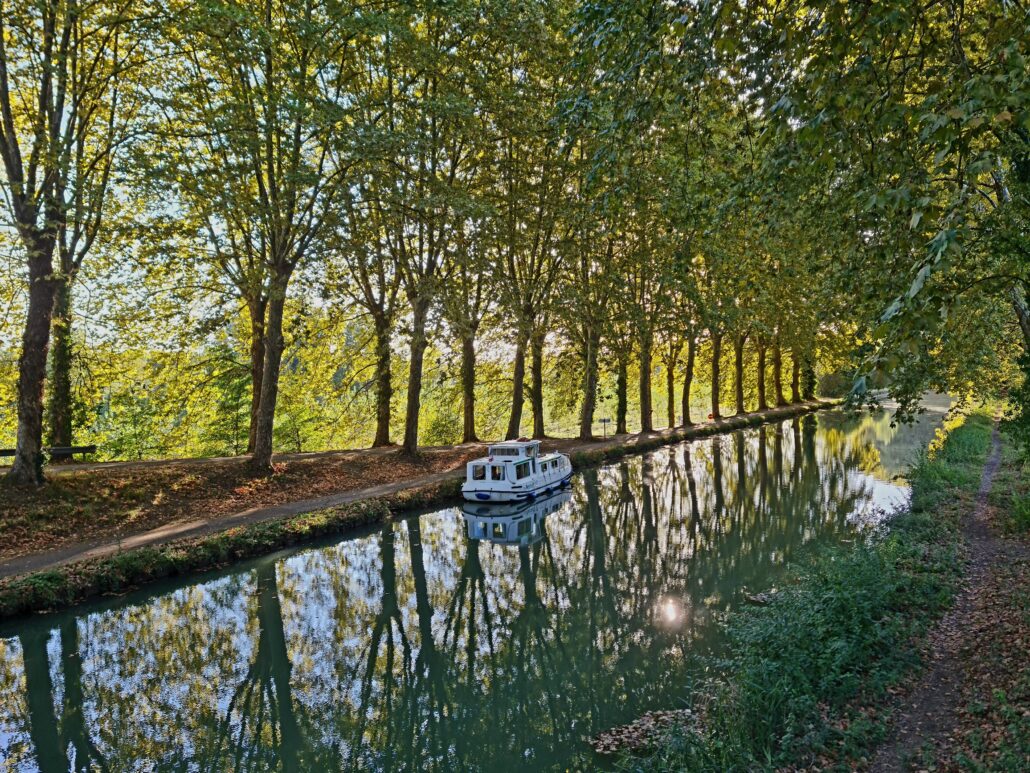

It was great not to be in a rush to go anywhere. We stopped and picnicked. We stop for wine. We stopped and ate. We stopped to check out churches and villages. Himself took one of the bikes and cycled ahead to man the locks when we hit three in succession. I took the wheel confident that there was little by way of damage I could do. The minutes stretched into hours and time seemed to go as slowly as the barge.
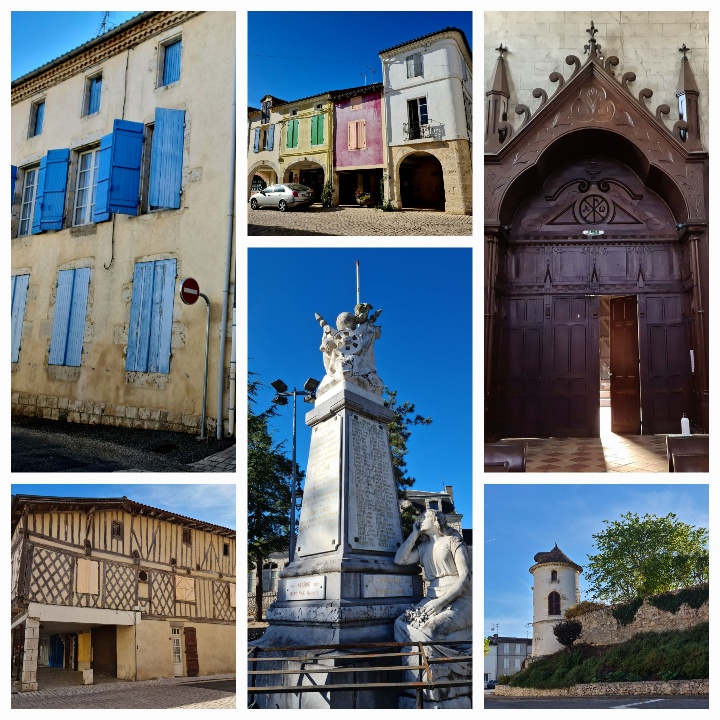
It was in the village of Damazan that I first came across cob and half-timbered walls (lower left photo). Had I been able to smell the sea air, I might have felt close to Burano, with the colourful paint jobs on some of the buildings. The parish church, involved in a sixteenth-century tug-of-war between the Catholics and the Protestants, is a lovely spot with an impressive doorway. We saw hardly anyone. There was no hanging masterpiece to attract the attention of passers-by. It felt as if all the young people were off at war somewhere and all who were left were the pensioners and the kids. I think rural France and I feel Resistance.

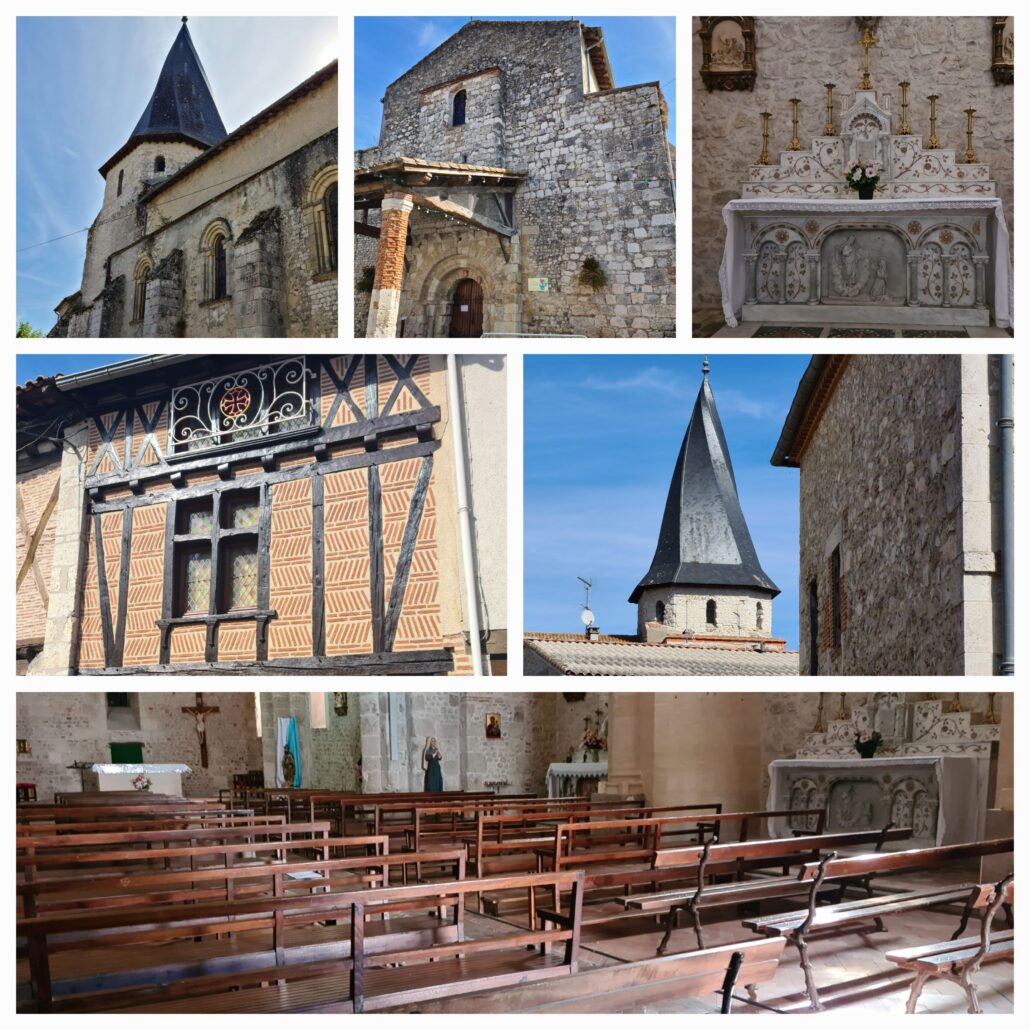
In Sérignac-sur-Garonne we found more of this cob and timber look, but even more interesting was the twisted bell tower on the local church. Legend has it that il avait été construit tors pour visser dans le ciel la pierre que le diable s’acharnait à poser car le bruit des cloches l’empêchait de faire sa sieste. [It had been built twisted to screw into the sky the stone that the devil persisted in putting down because the sound of the bells prevented him from taking his nap ~ can any French speakers offer a better translation?]
It is octagonal, with unequal sides, turns from right to left by 1/8 of a turn, measures 16 meters in height and is covered with slates . The total height of the bell tower from the ground is 33.70 m.
Note to self: Come back and stay in the Le Prince Noir – a former seventeenth-century convent.


As a fitting end to what had been a very memorable 36 hours, we got to cross over the Agen aqueduct which carries the canal de Garonne across the Garonne river.
The aqueduct is a dressed stone masonry structure consisting of 23 arches, each of 20m span, which at the time of its completion was the longest navigable aqueduct in France. It has a length of 539 metres, a width of 12.48m and a canal width of 8.82m.
The NMs pulled in and dropped us by the war memorials. I stopped for a read and to give the nod to those who’d given their lives to that I could enjoy mine. French soldiers, you ask? What have they to do with me? It’s a tenuous link, perhaps, but I made the connection.
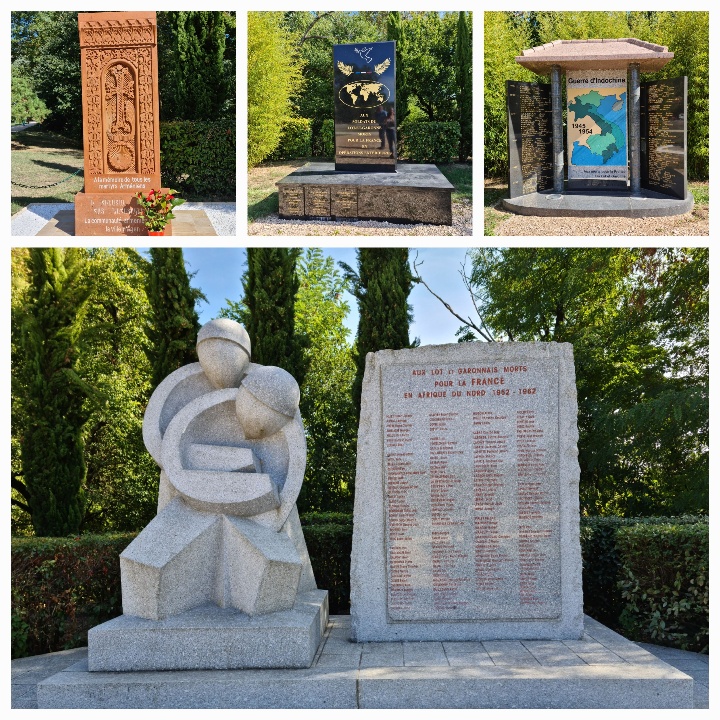
It’s a glorious way to spend a week in September.
Where to eat
- Pont des Sables – definitely bread and croissants from the boulangerie
- Villeton – Chez Oscar (excellent Portuguese wine!)
- Buzet-sur-Baïse – Restaurant le Vigneron – go for the buffet and leave plenty of room for dessert
Share this:
- Click to share on X (Opens in new window) X
- Click to share on Facebook (Opens in new window) Facebook
- Click to share on Pinterest (Opens in new window) Pinterest
- Click to share on LinkedIn (Opens in new window) LinkedIn
- Click to share on Reddit (Opens in new window) Reddit
- Click to share on WhatsApp (Opens in new window) WhatsApp
- Click to share on Pocket (Opens in new window) Pocket
- Click to share on Telegram (Opens in new window) Telegram
- Click to email a link to a friend (Opens in new window) Email







One Response